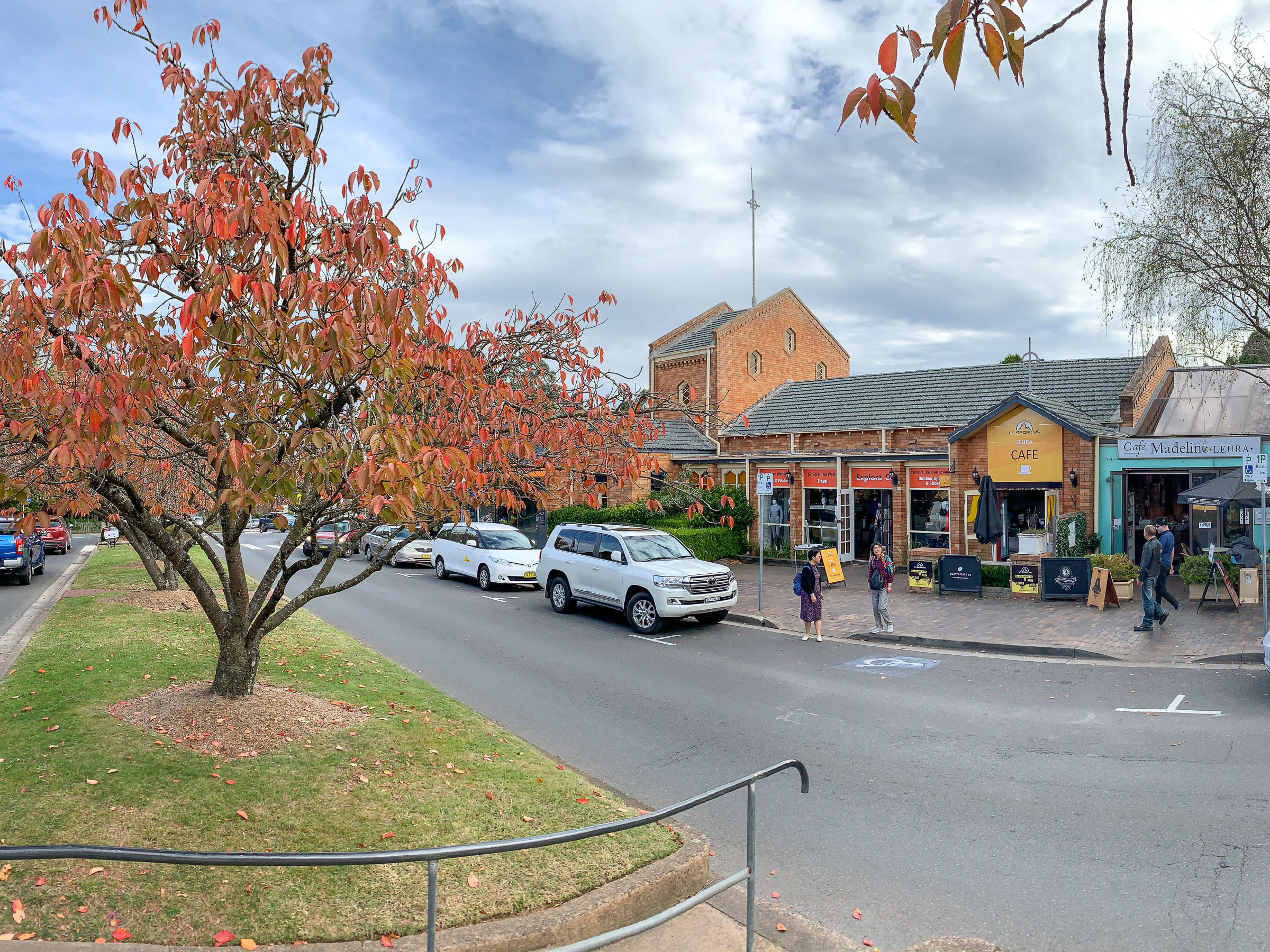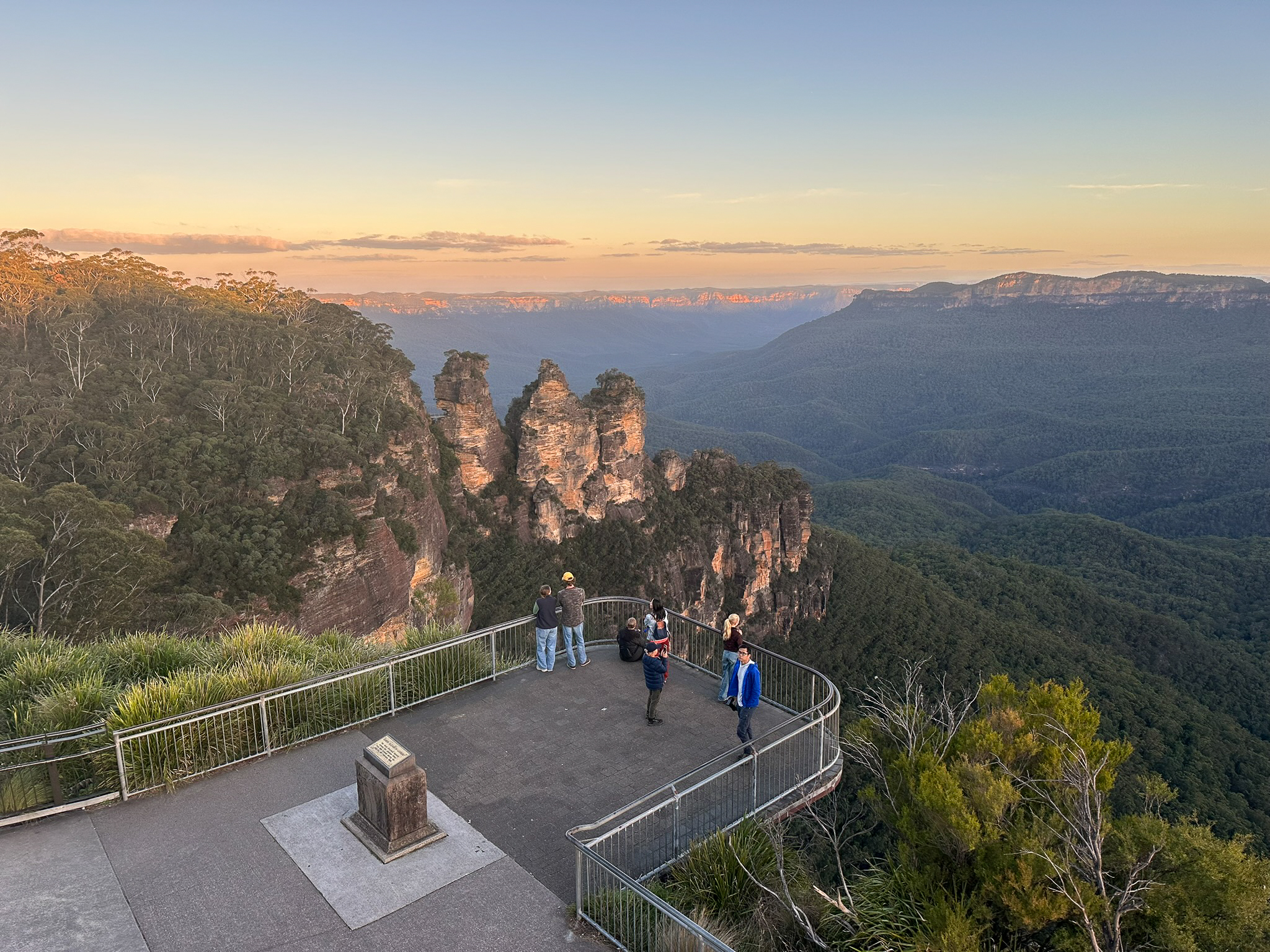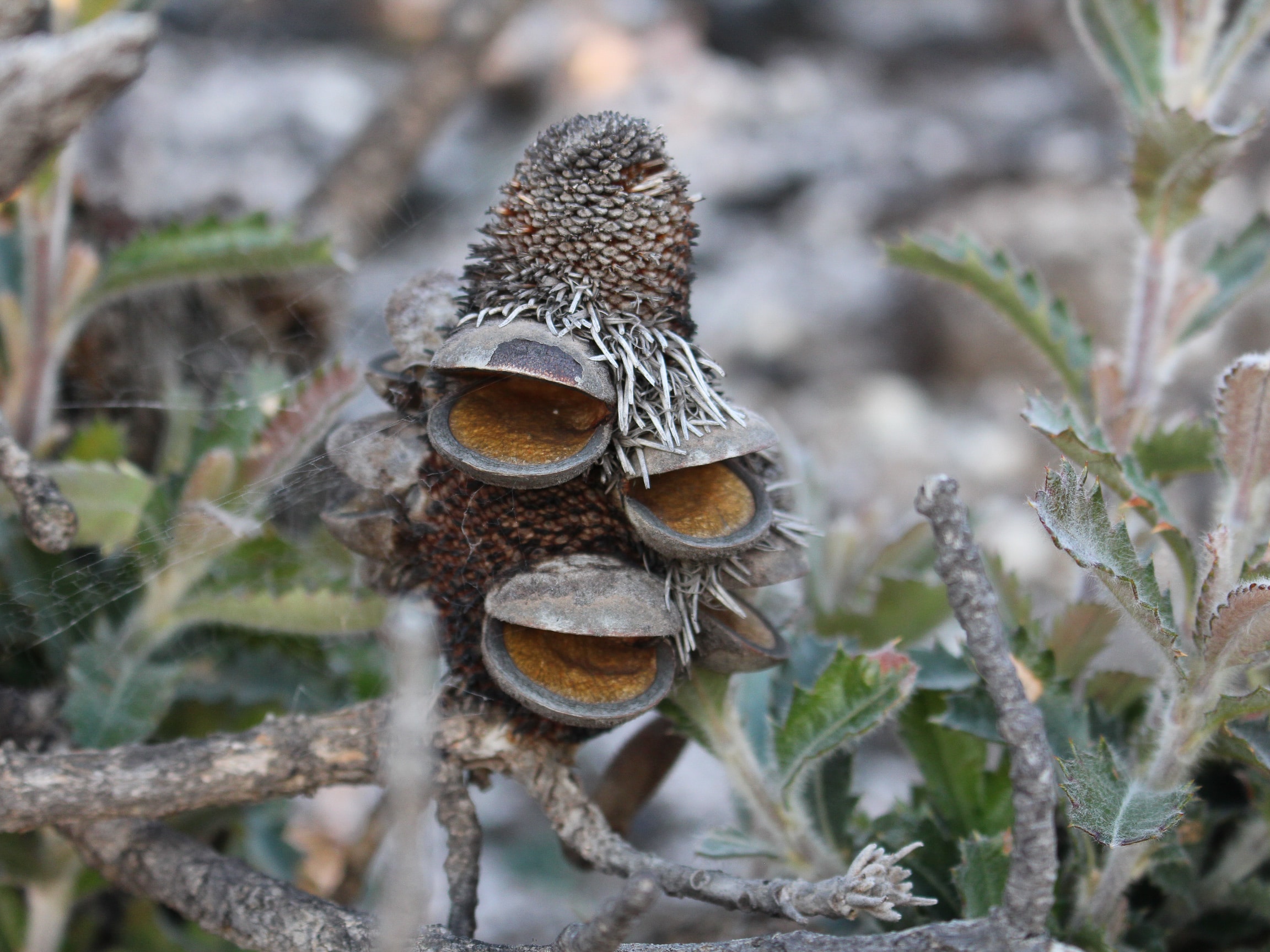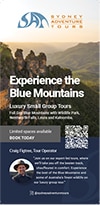A short walk along Narrow Neck Plateau in the Blue Mountains
The first weekend of June marked about 5 months since bushfire devastated some parts of the Blue Mountains . Two areas near Katoomba devastated by the fires are the Ruined Castle in the Jamison Valley and parts of the Narrow Neck Plateau. With the regrowth well on its way here, we set out on a discovery visit to see how our flora regenerates and recovers after a bushfire.
We began our visit by watching the sun set behind the Megalong Valley from a view point at Narrow Neck. The next day we returned for an exploratory walk. We found that the the bushfire affected areas were beautiful and astounding. The Banksia, grass trees, and eucalyptus are recovering well. Wildflowers were blooming and the New South Wales state flower, the Waratah, was sprouting. Look for these to flower in a few months.
After all the harrowing photos coming out of bushfire-affected areas, it’s amazing how the Australian bush comes back. It is remarkably resilient to fire.
There are many species of trees and shrubs that have evolved with fire and, so, have developed protections or even make use of fire towards regenerating. Some species of trees require the heat from fire for their seeds to germinate.
Positive signs of new bushfire recovery
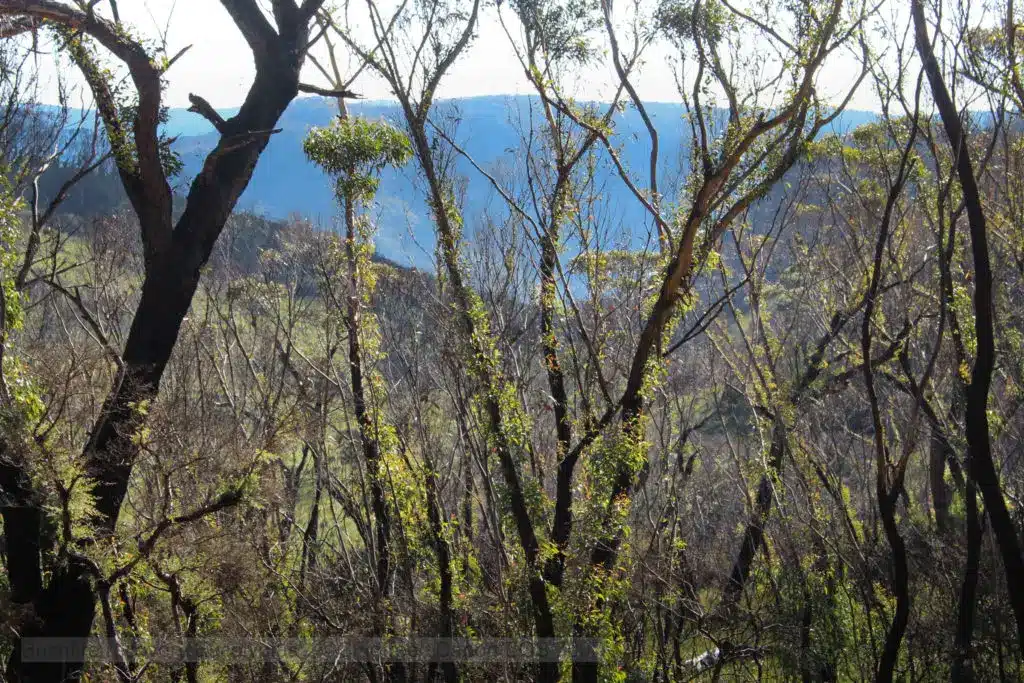
Many eucalyptus species have specialized buds that lay protected under the bark of their trunks. When the trees are burned, these buds soon sprout new leaves and branches. Here you can see new growth along the fire-blackened limbs of the gum trees.
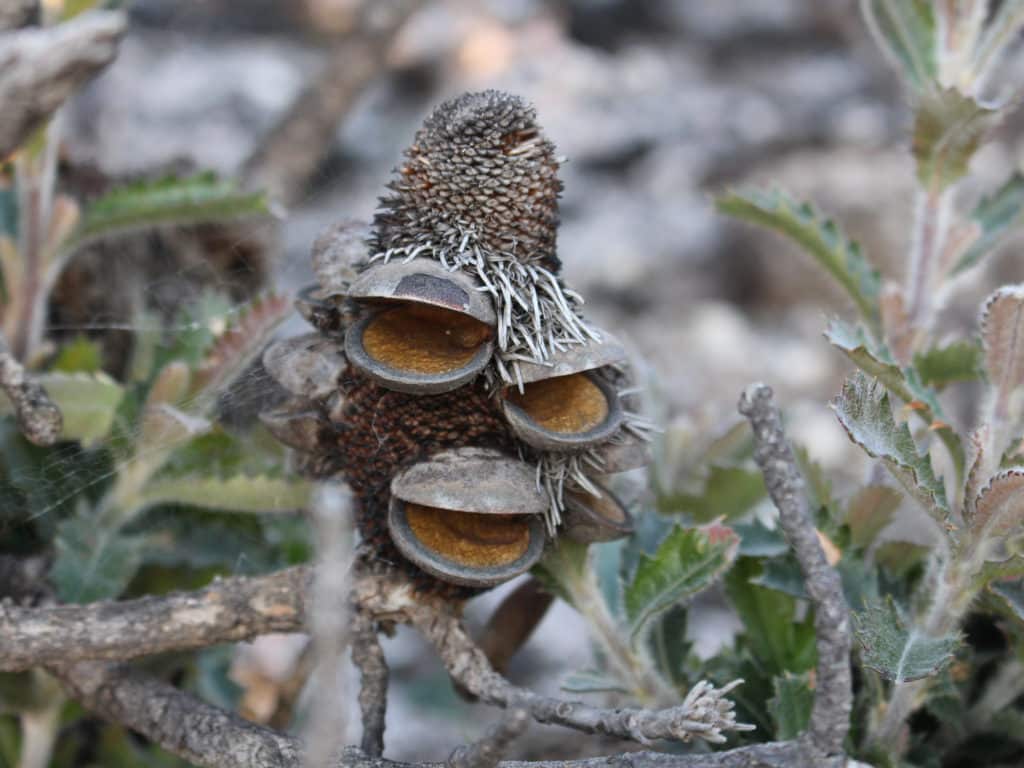
Many Banksias require bushfire to open their seeds pods. These open pods have dropped their seeds into the ash bed, which is high in the nutrients needed for strong seedling growth.
Banksia Serrata generally becomes fire tolerant by five to seven years of age beyond which they are able to re-sprout after fire.
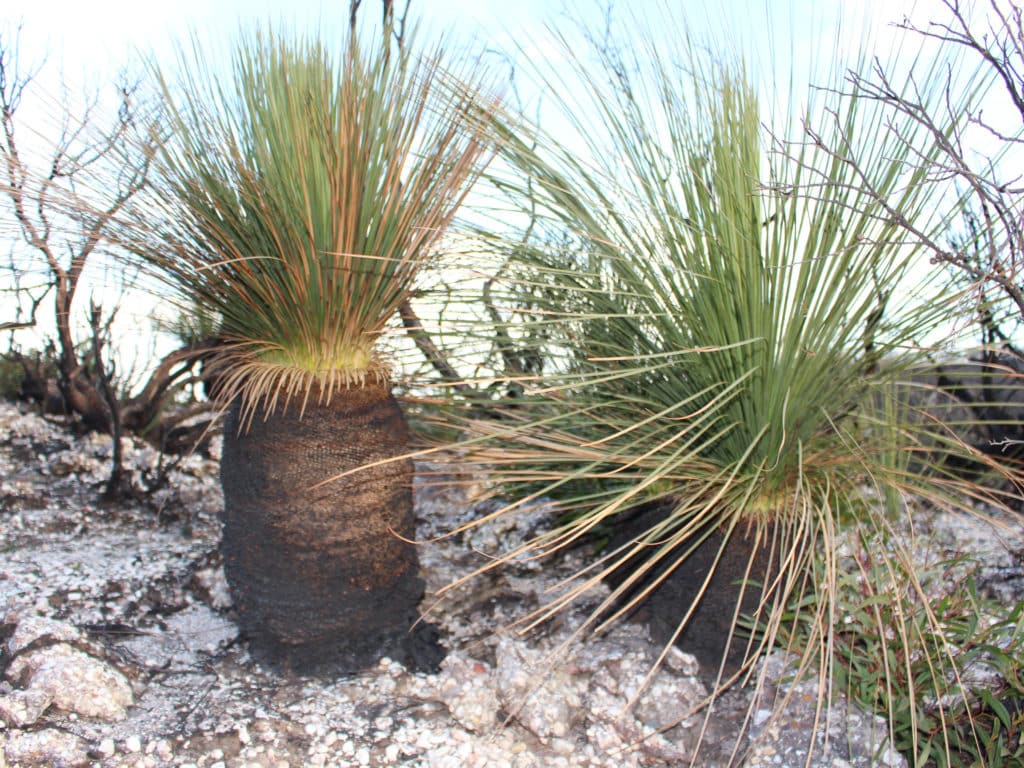
Grass Trees retain dense, dead leaves around their stems to serve as insulation against the heat of a bushfire. Fire stimulates the growth of a spear-like seed pod which extends several meters above the tree and grows rapidly after a bush fire. All the grass trees have started to generate new leaves and we can expect a lot of seed pods to extend over the next few months.
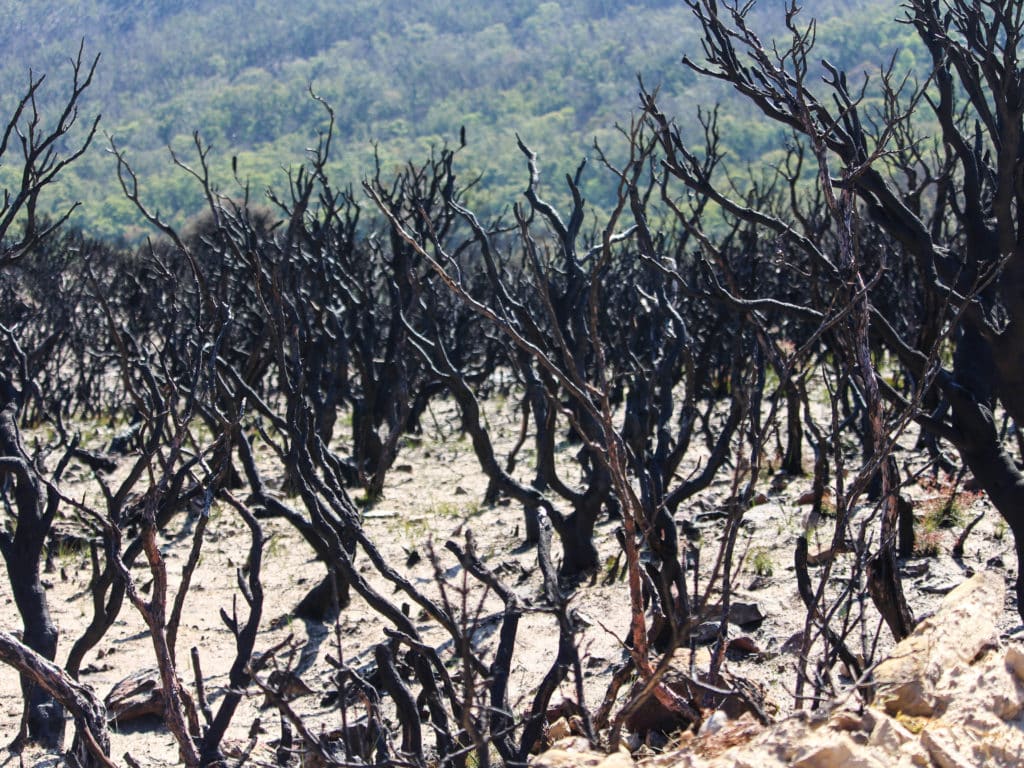
Narrow Neck Plateau
Narrow Neck Plateau stretches from Katoomba south-westwards for about 25 kms. It divides the Jamison Valley to the east from the Megalong Valley to the west. There are good views of both valleys from the plateau, particularly in the narrower sections. It maintains the same altitude as the other Tableland areas of the upper Blue Mountains – about 1000 metres.
A road along this narrow plateau stretches for 12 kilometres, there is a gate about 2.5 kilometres along the road, limiting the rest of the road to walkers and cyclists.
On our Blue Mountains Private Charter Tour we can drive along this road and extend it with this walk. We also offer bicycle transport should this of interest to groups looking for a day out.
The fire on Narrow Neck Plateau was the one which came closest to Katoomba, the largest town in the Blue Mountains. Residents with homes overlooking the valleys had a terrifying view of this blaze at its peak. On this trip, we haven’t seen the damage to other areas. Fire ravaged Wollemi National Park, to the northwest, we’d like to visit that area on another weekend.
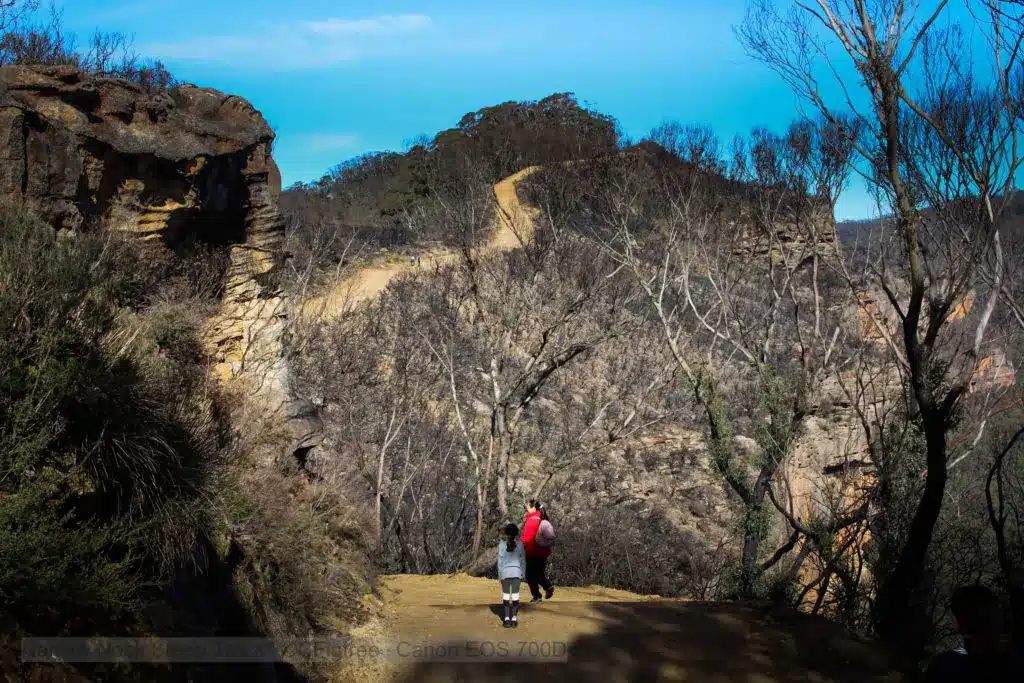
While the first few kilometres are quite flat, there are also a few steep sections on this track but it is a popular ride for cyclists, especially mountain bikers. We saw quite a few while we were walking. The National Parks and Wildlife recommends this route for mid-level to experienced riders. Find out more from the Blue Mountains National Parks here.
Panoramic Views over the Jamison Valley and the Ruined Castle.
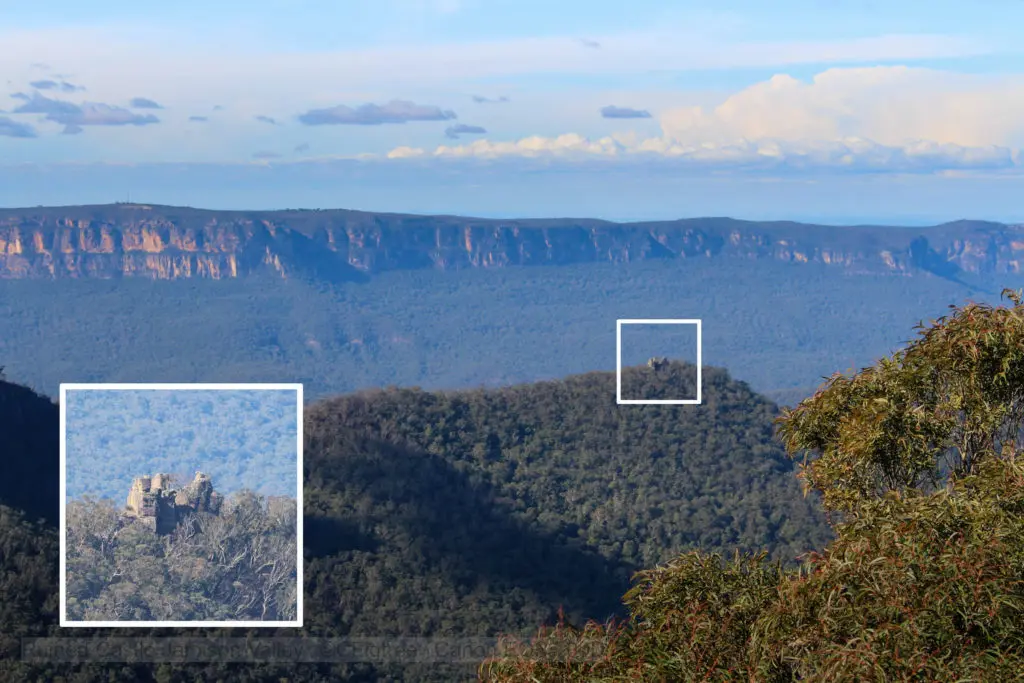
The view from Narrow Neck to the east, into the Jamison Valley, looks toward the Ruined Castle, Kings Tableland Plateau, Mount Solitary and Lake Burragorang. There are stairs from Narrow Neck into the Jamison leading to walks back to Katoomba, to the Ruined Castle, or Mount Solitary.
Castle Head
Castle Head is one of the best spots for views of the Ruined Castle and Mt Solitary in a straight line and Lake Burragorang in the distance. We’ll put together another blog post about this soon.
Sunset Views
Facing west. The Narrow Neck Plateau offers some of the best sunset views in the Blue Mountains. Not many lookouts face west but the one at Narrow Neck does. Here you have views across the Megalong Valley and beyond. Visitors to the Blue Mountains can enjoy quintessential sunset views from Echo Point overlooking the Three Sisters. Here the setting sun reflects from rock formations in vivid colours. Professional and amateur photographer have produced many stunning images at this time of day. There’s usually a chance compare notes with other photographers who often congregate at this popular lookout in the golden hour.
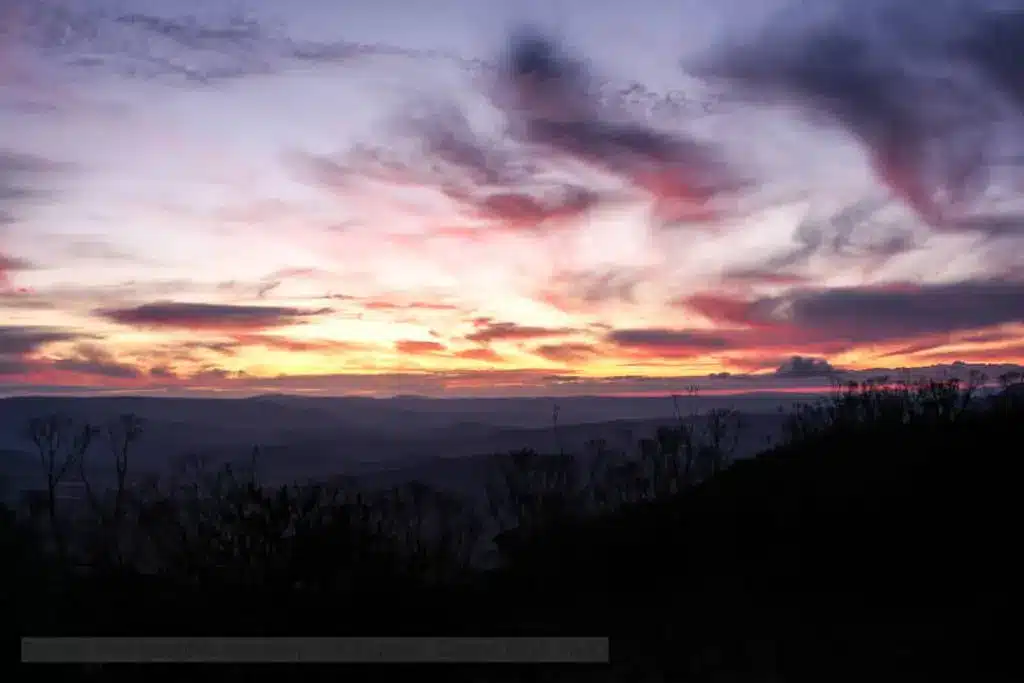
View west across the Megalong Valley from Narrow Neck Plateau we visited the day before. Burnt Banksia, Acacia and Eucalyptus trees are scattered in foreground.
Blue Mountains Bushfire recovery, we plan to re-visit and update you
We’ll be revisiting various areas in the fire impacted nationals parks and wilderness areas around Sydney and posting more blog posts. We’re especially interested in seeing how various plants – such as the NSW state flower, the Waratah – rebound. As we move towards spring, we should see plenty of regrowth – August, September, and October should offer inspiring bush walks and bicycle rides.
Sydney Adventure Tours offers private charter tours to the Blue Mountains and this walk could be featured as part of your day. Tours are also available in the City of Sydney, the South Coast, the Northern Beaches, and the Hunter Valley. Bespoke tours can be arranged to meet your needs.

